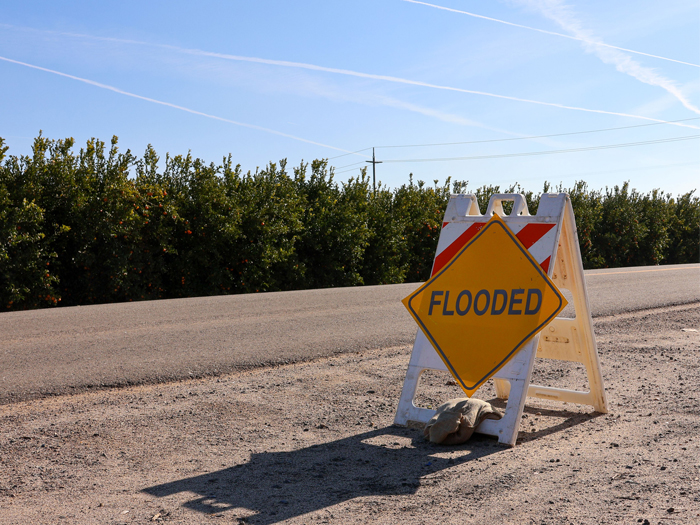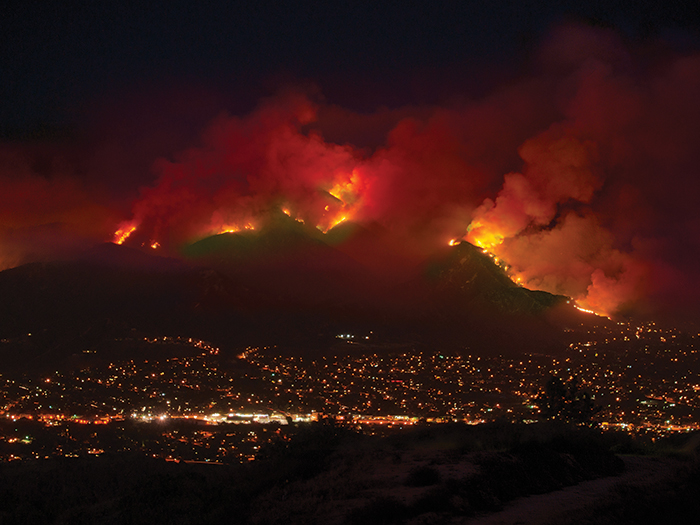California’s Recent Floods Prove We’re Not Prepared for What’s Coming. Why Higher Insurance Uptake Can’t Be the Only Solution

California has sustained economic losses of $5 billion to $7 billion from the flooding which swept through large parts of the state last month.
That’s according to Moody’s RMS, which estimates insured losses of $500 million to $1.5 billion from the damage inflicted on key infrastructure.
The damage was more extensive than in previous years, as the state went from its three driest years on record to one of its wettest months ever, suggesting that many locations, particularly those affected by wildfires, have become more vulnerable to flash floods and mudflow as climate change takes hold.
The gap between total economic and insured losses is evidenced by the fact that less than 2% of California households have flood insurance — a figure that has been steadily declining year-on-year as the number of National Flood Insurance Program (NFIP) policies in place has dwindled.
However, despite the widespread devastation it caused, this wasn’t the most extreme storm to hit California. The largest recorded flood event was the 1862 ARkStorm, which resulted in more severe precipitation and lasted for 45 days.
The most recent flooding was caused by a series of extratropical cyclones that started on the West Coast on December 26, 2022, and resulted in heavy rainfall, overtopped rivers, flash floods, levee breaches, mudslides, fallen trees, debris flow, heavy snow at high altitudes and wind damage. The amount of rainfall was worsened by a band of high atmospheric water vapor known as an atmospheric river.
New Rainfall Records
Such was its intensity that several central California locations set new three-week rainfall records, while some places received their annual average rainfall in less than one month. This led to widespread flash floods and river overtopping. In one instance, the San Lorenzo River upstream of Santa Cruz rose by more than 16 feet in less than eight hours — its highest water depth since records began about 85 years ago.
It wasn’t just rivers and coastal areas that were affected, either; multiple instances of pluvial flooding were reported as well.

Firas Saleh, director, product management at Moody’s RMS
“If we’ve learned anything from this extreme rainfall and subsequent damage, it’s that even perceived low-risk flood zones are still flood zones,” said Firas Saleh, director, product management at Moody’s RMS. “If it rains, it can overflow.”
The damage caused by the extreme weather was extensive, and state highways and local roads bore the brunt of the flooding and mudslides. Trees, previously stressed by exceptionally dry conditions, were uprooted by a combination of high water velocities, saturated soils and heavy winds, which also damaged power networks, properties and vehicles.
“One of the factors exacerbating floods in California is the compound interactions between chronic drought and acute floods,” said Saleh. “This adds an extra dimension of complexity because drought leads to soil crusting and compaction, which means less groundwater infiltration and more runoff, hence higher risk of flooding.”
The damage to infrastructure was worsened by the fact that it wasn’t designed to withstand such weather extremes. Rather, it was based on backward-looking data and limited historical records.
Low Insurance Take-Up
The low take-up rates of flood insurance are down to the fact that only homeowners with a government-backed loan who live in Special Flood Hazard Areas (SFHA) are mandated to buy a policy. These SFHA boundary flood zones don’t always reflect the current flood risk and are backward-looking and infrequently revised, according to Moody’s RMS.

Daniel Kaniewski, managing director, public sector, Marsh McLennan
Quite often, even those householders who are eligible for coverage either can’t afford it, incorrectly assume they are covered under their standard homeowners’ policy or have a lack of understanding about the incurred cost from flooding. Others wrongly believe that, because they live in a low-risk area, it means they won’t need it.
“Flood insurance, whether purchased through the National Flood Insurance Program or a private flood insurance policy, is necessary to protect against the financial costs of flooding, regardless of whether the insured is a homeowner, renter or business owner,” said Daniel Kaniewski, managing director at Marsh McLennan and former Federal Emergency Management Agency (FEMA) deputy administrator. “There is a 30-day waiting period for policies to take effect, so the time to buy is well before a flood event happens.”
Building Code Challenges
A deeper problem is that building codes differ greatly from region to region. While new and renovated property has to meet these stringent requirements, the vast majority of older existing buildings don’t have to. Even with the new codes, state and local governments have discretion over whether to adopt them.

Erin Ashley, director of risk engineering, Archipelago
“Based on a recent study by FEMA, 65% of jurisdictions have not adopted modern building codes,” said Erin Ashley, director of risk engineering at Archipelago. “This leaves many states and communities without adequate protection against natural hazards, including floods.”
In addition to putting appropriate flood defenses and protection in place and ensuring they have the right coverage level, insureds need to be aware of the probability and danger of flooding, as well as the associated economic impact. By carrying out a thorough risk assessment and working with their broker to provide the underwriter with complete historical data on their property, they can also get a more accurate assessment and pricing.
“Accurate data on building attributes, such as building elevation, flood gates and flood risk, as well as age of materials and when systems were installed, allows the insurance industry to accurately price risk and allows the building owners to prioritize their mitigation efforts,” said Ashley. “It is a data-driven approach to incorporating resilience.”
As a result of increasingly unpredictable, frequent and severe weather events such as the California floods, insurers, for their part, need to adopt more accurate, time-based simulation catastrophe models and derivative data products to better screen and price the risk. By using the latest advances in modeling techniques and computational power, they can provide a more realistic view of potential losses at both the location and portfolio level. &










